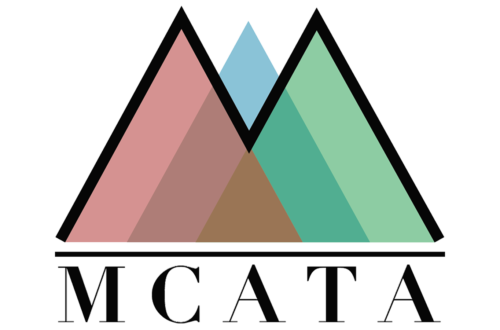Position Paper of the Mathematics Council of the Alberta Teachers’ Association (MCATA)
Since the Blue Ribbon Panel on the Review of Mathematics 30 (1993), teachers have continued to voice concerns that appropriate technology has not been made available. This continues to be true today, in an era where technology is ubiquitous, cost effective and readily accessible.
As per this report, it is recommended that School Boards “make technology increasingly available for students (eg graphing calculators, computers, manipulatives)” (Jorgensen et al., 1993).
“A number of teachers reported in their written responses to the questionnaire that school boards were not providing a suitable level of technological support for the mathematics curriculum. In Mathematics 30, for example, students should have access to a graphing calculator or computer to fulfill the objectives of the course. Some school jurisdictions have not provided the technological support needed to properly implement the curriculum and provide students with appropriate technological experiences” (Jorgensen et al., 1993).
MCATA proposed the following policy to the ATA 2020 Annual Representative Assembly and it was adopted by the Association.
Be it resolved that the Association urge the Government of Alberta to allow students to use appropriate, secured educational technologies, in addition to scientific and graphing calculators, during math and science diploma exams and other standardized assessments.
Discussion
The intent of the 2020 resolution can be summarized in twofold simple statements. In communicating these two statements we feel our intentions may be clearly communicated:
- To improve equity during standardized assessments such that these assessments more closely reflect student knowledge.
- To encourage teachers to more fully meet the expectations of the program of studies.
There have been a number of discussions regarding the use of appropriate, secured educational technologies, in addition to scientific and graphing calculators, during math and science diploma exams and other standardized assessments. The following is a summary of our discussions with MCATA members.
Costs, endorsements and standards
Math teachers are concerned about the costs associated with the currently approved technologies, unintentional corporate endorsement, and international standards.
Alberta Education has only approved graphing calculators from the following corporations: Casio, Hewlett-Packard, Sharp, Texas Instruments. In addition, it has been recognized by members that classroom practice is limited almost exclusively to those technologies available from Texas Instruments. We wish to escape this unintentional endorsement and bottleneck of classroom curriculum. Our intention is to meet the demand for scientific and graphing technology while still meeting the stringent permissions of Alberta Education.
The associated costs of currently approved technologies are readily available. Albertan families are required to expend significant financial resources on these commercially available tools that have been approved for use during diploma exams and other standardized assessments to support their children during these assessments.
Powerful graphing tool has been available at no cost from Alberta Education through the LearnAlberta.ca website since 2006 (Blond, 2006). “This resource can be used to graph mathematical functions or relations. Graphs of the absolute value, reciprocal and inverse of a single function can be compared with the single defining function. As well, graphs of the sum, difference, product, quotient and composition of two functions can be compared with the two defining functions. When a parameter is dynamically changed, all graphs related to functions or relations with that parameter will also change dynamically” (Blond, 2006). This resource is rarely, if ever, utilized by teachers in classrooms because this technology has not yet been approved for use during math and science diploma exams and other standardized assessments.
There are other examples of powerful graphing technologies recently made available at no cost. For example, the test-mode apps developed by Desmos are available at no cost to everyone at https://www.desmos.com/practice. These are provided “to help students and teachers prepare for these assessments” (Desmos, 2020). These digital technologies are easily downloaded and installed on a variety of existing school infrastructure yet have remained largely underutilized or implemented as parallel teaching devices because they have not yet been approved for use during diploma exams.
Standardized assessments are currently being administered both in Canada and the United States that allow for use of other appropriate, secure, educational technologies on state-wide performance assessments (Dan Meyer, 2017). For example, Saskatchewan’s policy is flexible enough to allow for the use of phones, tablets, and computers so that graphing and financial applications may be used. Thirty-five states have approved Desmos Test-Mode for use during Standardized Assessments including those of the International Baccalaureate Program.
To quote one teacher: “The horse before the cart in this province will be having Alberta Education approve and incorporate technologies within (and for) the diploma in order to get us as practicing teachers to abandon the approved Texas Instruments calculators… until then, [all other appropriate, secured educational technologies] will remain parallel teaching devices” (Personal Communication, June 18, 2020).
Ease of Use, Teaching Support Concerns
Our members have expressed concerns about the functions of technologies, the use of exam mode, and the requirements that each of these technologies specify that increase teacher/assessor workload during standardized assessments. In addition, the absence of resources listing approved scientific calculators or any other appropriate, secure, educational technologies has been raised as a concern.
Alberta Education has specified prohibited calculator materials and properties for scientific and graphing calculators and annually updates a list of approved graphing calculators for use when writing standardized assessments. The concerns raised by our members were of those regarding the absence of a listing of approved scientific calculators or any other appropriate, secure, educational technologies. It appears that students are using devices with prohibited functions during these assessments because the current listing of appropriate, secure educational technology does not include any scientific calculators or other appropriate, secure, educational technologies.
Graphing calculators with test modes that restrict prohibited functions are currently acceptable. These currently approved technologies (graphing calculators) require the use of exam mode during diploma examinations. Similar test modes are available from other appropriate, secured educational technologies and yet have not been approved for use during standardized exams.
In addition, principals and teachers administering standardized exams must already ensure that procedures are implemented “to ensure that only approved calculators are brought into the diploma exam writing room and that they have been appropriately cleared and configured before and after the official scheduled diploma exam administration” (Alberta Education, 2019, p. 3).
For example, “to prepare Texas Instruments Nspire calculators (all approved Nspire models) for diploma exam writing purposes, the Press-to-Test feature must be used” (Alberta Education, 2019, p. 8). “To prepare Texas Instruments calculators for diploma exam writing purposes, we recommend referring to the step by step instructions for using TestGuard, Press-to-Test, or memory reset available at https://education.ti.com/en/resources/calculator-set-up“ (Alberta Education, 2019, p. 8).
Our members feel that there are appropriate, secure educational technologies that need to be included among those currently approved for standardized examinations. We have found that the requirements of these technologies do not increase teacher/assessor workloads significantly and, in some cases, reduce those workloads.
Recommendations
MCATA makes the following recommendations in light of these discussions, the directions established by the current Alberta Program of Studies, the continued improvements in technology, and the importance of technology in provincial assessment programs. These recommended changes are intended to improve equity and accessibility and to free up valuable instructional hours for improved classroom curriculum and pedagogy as the technology permitted on assessments becomes more user-friendly and accessible than what is currently approved.
Recommendation 1
Grade 12 Mathematic Diploma Examination Program
MCATA recommends that Alberta Education remove the requirement for technologies to be “designed primarily to perform mathematical computations”. If the Grade 12 Mathematics Diploma Examination Program continues to be administered, then MCATA recommends that Alberta Education continue with the position that: Those students for whom an appropriate, secured educational technology is a familiar classroom tool are encouraged, but not required, to use said appropriate, secured educational technology when writing a Grade 12 Mathematics or Science Diploma Examination.
Recommendation 2
Grade 12 Mathematics Diploma Examination Program
MCATA recommends that appropriate, secured educational technologies with graphing capabilities that meet the stringent prohibition guidelines of the diploma examinations be permitted for use during diploma examinations. MCATA recommends that Alberta Education consider revising the current calculator policy to indicate that students require the use of an appropriate, secured educational technology with graphing capabilities. We ask that in place of “calculator”, “graphing calculator” and “scientific and graphing calculators” that “technologies” be substituted. We recommend that Alberta Education expand its distributed list of approved graphing calculators to include approved scientific calculators and approved appropriate, secured educational technologies for use on the following year’s diploma examinations.
Recommendation 3
Grade 9 Mathematics Achievement Testing Program
MCATA acknowledges that mental mathematics is an important mathematical process and we continue to advocate for its continued inclusion in the Alberta Program of Studies. MCATA acknowledges the value of a part written without graphing calculators, scientific calculators, or any other secured, appropriate, educational technology. If the Grade 9 Mathematics Achievement Testing Program continues to be administered in its current form, MCATA recommends that Alberta Education extend the time permitted for the part written without the use of technology to provide an opportunity to assess a broader range of learner outcomes, across strands and mathematical processes in the Alberta Program of Studies. MCATA members also recommend that the examination be designed such that time from one section cannot be rolled over from the other section.
References
Alberta Education. (2008). The Alberta grade 10 – 12 mathematics program of studies with achievement indicators. Retrieved from https://education.alberta.ca/media/564028/math10to12.pdf
Alberta Education. (2019). Writing mathematics and science
diploma exams using calculators. Retrieved from https://www.alberta.ca/assets/documents/ed-diploma-exam-calculator-policy.pdf
Alberta Education. (2020). 2019–2020 diploma examinations program general information bulletin. (). Edmonton, AB: Government of Alberta. Retrieved from https://www.alberta.ca/assets/documents/ed-diploma-exam-general-information-bulletin.pdf
Dan Meyer. (2017). Desmos now embedded in year-end assessments across the United States. Retrieved from https://blog.mrmeyer.com/2017/desmos-now-embedded-in-year-end-assessments-across-the-united-states/
Desmos. (2020). About desmos test mode . Retrieved from https://www.desmos.com/test-mode
Jorgensen, A. (1998). Position paper of the MCATA regarding use of calculators in provincial assessment programs . Mathematics Council Newsletter, 16(7), 4-6. Retrieved from https://www.mathteachers.ab.ca/wp-content/uploads/2020/06/Mathematics-Council-Newsletter-Volume-16-Number-7-June-1998.pdf
Government of Alberta. (2020). 2020–2021 calculator information and rules for mathematics and science diploma exams. Edmonton, Alberta: Government of Alberta. Retrieved from https://www.alberta.ca/assets/documents/ed-diploma-exam-calculator-policy.pdf
Jorgensen, A., Hart, B., Stewart, H., May, K., Kieren, T., Phelps, J., & Glanfield, F. (1993). Report of the blue ribbon panel on the review of mathematics 30. (). Edmonton, AB: Mathematics Council of the Alberta Teachers’ Association. Retrieved from https://www.mathteachers.ab.ca/wp-content/uploads/2020/06/Report-of-the-Blue-Ribbon-Panel-on-the-Review-of-Mathematics-30-March-1993-Finished.pdf
MacQuarrie, A. (2006). Alberta education update. Mathematics Council Newsletter, 24(3), 2. Retrieved from https://www.mathteachers.ab.ca/wp-content/uploads/2020/06/Mathematics-Council-newsletter-Volume-24-Number-3-July-2006.pdf
Saskatchewan Ministry of Education. (2020). Calculator use policy. 2020-21 registrar’s handbook for school administrators (pp. 44-45). Regina, SK: Saskatchewan Ministry of Education.
Appendix A – Policy History
As per May 4, 2019 (5.d New Business of the Executive Committee of the Mathematics Council of the Alberta Teachers’ Association (MCATA), the Table Officers of MCATA drafted a resolution that was later reviewed at the September 21, 2019 Meeting of the Executive (5.c New Business of the Executive Committee of the MCATA) and subsequently, a motion was carried at the October 25, 2019 MCATA Annual General Meeting (5.d New Business of the Annual General of the MCATA) to forward the proposed resolution to the Provincial Executive Council for consideration.
The Provincial Executive Council considered our resolution at its February 24 – 25, 2020 meeting; the resolution was carried nearly unanimously by the 2020 Annual Representation Assembly on August 13 – 14, 2020.
This position paper was developed during the summer of 2020 with the intention of circulating it to all MCATA members in September 2020 and have it serve as the basis of discussions at our annual conference. We will collect the comments from MCATA members and prepare a revised version of this paper to be approved at the 2020 MCATA Annual General Meeting and send it to the Alberta Minister of Education through the Alberta Teachers’ Association shortly thereafter.
Appendix B – Requirements of the Program of Studies
Educators are required to address statements regarding technology from the program of studies through their curriculum. The following are examples of such statements:
Instructional Focus:
“The focus of student learning should be on developing a conceptual and procedural understanding of mathematics” (Alberta Education, 2008, p. 12).
Communication:
“Emerging technologies enable students to engage in communication beyond the traditional classroom to gather data and share mathematical ideas” (Alberta Education, 2008, p. 4).
Technology:
“Technology can be used effectively to contribute to and support the learning of a wide range of mathematical outcomes. Technology enables students to explore and create patterns, examine relationships, test conjectures and solve problems. Calculators and computers can be used to: • explore and demonstrate mathematical relationships and patterns • organize and display data • generate and test inductive conjectures • extrapolate and interpolate • assist with calculation procedures as part of solving problems • increase the focus on conceptual understanding by decreasing the time spent on repetitive procedures • reinforce the learning of basic facts • develop personal procedures for mathematical operations • model situations • develop number and spatial sense. Technology contributes to a learning environment in which the curiosity of students can lead to rich mathematical discoveries at all grade levels. The use of technology should not replace mathematical understanding. Instead, technology should be used as one of a variety of approaches and tools for creating mathematical understanding.” (Alberta Education, 2008, p. 7).
Information and Communication Technology (ICT):
“Students will develop a broad perspective on the nature of technology, learn how to use and apply a variety of technologies, and consider the impact of ICT on individuals and society” (Alberta Education, 2008, p. 11).
“Students will use technology to investigate and/or solve problems, pose and test solutions to problems by using computer applications, such as computer-assisted design or simulation/modelling software” (Alberta Education, 2008, p. 43).
“Students will access, use and communicate information from a variety of technologies, select information from appropriate sources, including primary, and secondary sources, communicate in a persuasive and engaging manner, through appropriate forms, such as speeches, letters, reports and multimedia presentations, applying information technologies for context, audience and purpose that extend and communicate understanding of complex issues” (Alberta Education, 2008, p. 43).
“Students will seek alternative viewpoints, using information technologies, consult a wide variety of sources that reflect varied viewpoints on particular topics, evaluate the validity of gathered viewpoints against other sources” (Alberta Education, 2008, p. 43).
“Students will critically assess information accessed through the use of a variety of technologies, assess the authority, reliability and validity of electronically accessed information, demonstrate discriminatory selection of electronically accessed information that is relevant to a particular topic” (Alberta Education, 2008, p. 43).
“Students will use technology to investigate and/or solve problems, investigate and solve problems of prediction, calculation and inference, investigate and solve problems of organization and manipulation of information, manipulate data by using charting and graphing technologies in order to test inferences and probabilities, generate new understandings of problematic situations by using some form of technology to facilitate the process, evaluate the appropriateness of the technology used to investigaten or solve a problem” (Alberta Education, 2008, p. 43).
“Students will use electronic research techniques to construct personal knowledge and meaning, analyze and synthesize information to determine patterns and links among ideas” (Alberta Education, 2008, p. 44).
“Students will demonstrate an understanding of the nature of technology, solve mathematical and scientific problems by selecting appropriate technology to perform calculations and experiments” (Alberta Education, 2008, p. 44).
“Students will understand the role of technology as it applies to self, work and society, demonstrate an understanding of the basic principles and issues of e-commerce, including such topics as security and privacy, marketing, and implications for governments businesses and consumers alike, use current, reliable information sources from around the world” (Alberta Education, 2008, p. 44).
“Students will organize and manipulate data, manipulate and present data through the selection of appropriate tools, such as scientific instrumentation, calculators, databases and/or spreadsheets” (Alberta Education, 2008, p. 44).
Appendix C – Current Definitions of Technology Approved for Diploma Examinations
Alberta Education has stated that “to ensure equity only calculators that have been approved by Alberta Education may be used when writing mathematics and science diploma exams” (Alberta Education, 2019, p. 1).
The current definitions of technology permitted on the diploma examinations restrict approved technologies to:
“Calculators that have been approved by Alberta Education may be used when writing diploma exams” (Alberta Education, 2019, p. 1).
“Both graphing and scientific calculators, with no prohibited properties (see Prohibited Calculator Materials and Properties for Scientific and Graphing Calculators) may be used during a diploma exam. To be approved by Alberta Education for diploma exam writing purposes, a graphing calculator must be a hand-held device designed primarily to perform mathematical computations, including logarithmic, trigonometric and graphing functions” (Alberta Education, 2019, p. 1)
“The following graphing calculator properties are permitted for math and science diploma exams: Function graphing and display capabilities, including displaying more than one function at a time and tracing a function. Standard scientific calculator operations, e.g., sine, cosine, tangent, inverse functions, logarithms, power (xn). Regression modeling functions” (Alberta Education, 2019, p. 1).
“The following calculator properties and materials are not permitted when writing diploma exams: programmed memory content, symbolic manipulation capabilities, ability to provide trigonometric calculation exact values, ability to simplify radicals and rationalize denominators, wireless communication capabilities, built-in notes, libraries, or formulae (e.g. definitions or explanations in alpha notation), downloaded programs, external (peripheral) devices and other support materials such as manuals, printed or electronic cards, printers, memory expansion chips or cards, external keyboards, and calculator cases” (Alberta Education, 2019, p. 8).
Appendix D – The Lowest Available Prices for Approved Technologies
Casio: fx 9750 GII ($75.99), fx 9860 GIIs ($107.99), fx 9750 G Plus (no longer manufactured).
For Hewlett-Packard: HP Prime ($221.35).
Sharp: EL-9900, EL-9600, EL-9600C (no longer manufactured or supplied to Canada).
Texas Instruments: TI-nspire CX Handheld ($189.99), TI-83 Plus ($145.99), TI-84 Plus ($162.99), TI-84 Plus Silver ($126.10), TI-84 Plus Pocket SE ($149.97), TI-84 Plus CE ($149.97), TI-83, TI-83 Plus Silver, TI-nspire (with Touchpad or Clickpad), TI-84 Plus C Silver (no longer manufactured).






